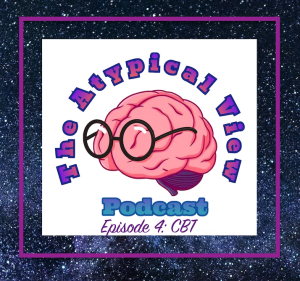Cognitive Behavioral Therapy (CBT) has long been considered a gold standard in the field of mental health. Its structured, solution-focused approach is often praised for its effectiveness in treating anxiety, depression, and other common mental health challenges.
But for neurodivergent individuals, especially autistic people, research shows CBT often falls short.
The Problem with CBT for Autistic People
Weston et al. (2016) conducted a systematic review and found that standard CBT had limited efficacy in reducing anxiety for autistic youth, and outcomes were mixed for adults. Other studies have echoed this, noting that without proper adaptations, CBT often fails to address the sensory, social, and processing differences that come with autism.
One of the biggest challenges is that CBT often focuses on insight and logic, helping clients become more aware of how their thoughts impact their emotions and behaviors. But here’s the twist: many late-diagnosed autistic individuals already possess a high level of self-insight. Especially among women and AFAB folks, years of masking, internal rumination, and self-analysis mean that the “insight work” CBT emphasizes might not only feel redundant — it can even feel invalidating.
When your brain already runs a 24/7 analysis of social missteps, tone of voice, and perceived failures, being told to “reflect on your thinking” can sometimes feel like adding fuel to the fire.
Click below for The Atypical View Podcast on this topic:
Where CBT Falls Short
CBT’s focus on “challenging cognitive distortions” can be problematic when applied to autistic thinking patterns. For example:
-
- A belief like “social situations are exhausting and unpredictable” may not be a distortion, it may be a lived sensory reality.
-
- A statement like “I can’t handle change” might not be negative thinking, it might reflect genuine executive functioning struggles that need support, not reframing.
This is where trauma-informed and neurodivergent-affirming approaches become essential. Therapists need to recognize the difference between distorted thinking and lived neurodivergent experience, and that pushing cognitive restructuring without first validating those experiences can do more harm than good.
Where CBT Can Help (With Adaptation)
CBT isn’t all bad, when adapted thoughtfully, it can be a helpful tool in the neurodivergent therapy toolbox. Adaptations may include:
-
- Using visual supports, scripting, or sensory-friendly spaces
-
- Focusing on self-compassion and values, not just distorted thinking
-
- Integrating other modalities such somatic work, co-regulation, or mindfulness
-
- Allowing space for non-linear progress and validation of neurodivergent traits
In this way, CBT can be one piece of a broader, affirming support plan, not the entire solution.
For example, individuals with Obsessive-Compulsive Disorder (OCD) often benefit from CBT-based approaches like Exposure and Response Prevention (ERP). These methods can help reduce compulsive behaviors and intrusive thought cycles by teaching structured ways to interrupt those patterns.
CBT can also offer useful tools for ADHD — such as externalizing thought patterns, developing planning strategies, and learning to pause and assess impulsive behaviors. However, the work often needs to be more experiential, visual, and paced to meet executive functioning needs.




1 Comment